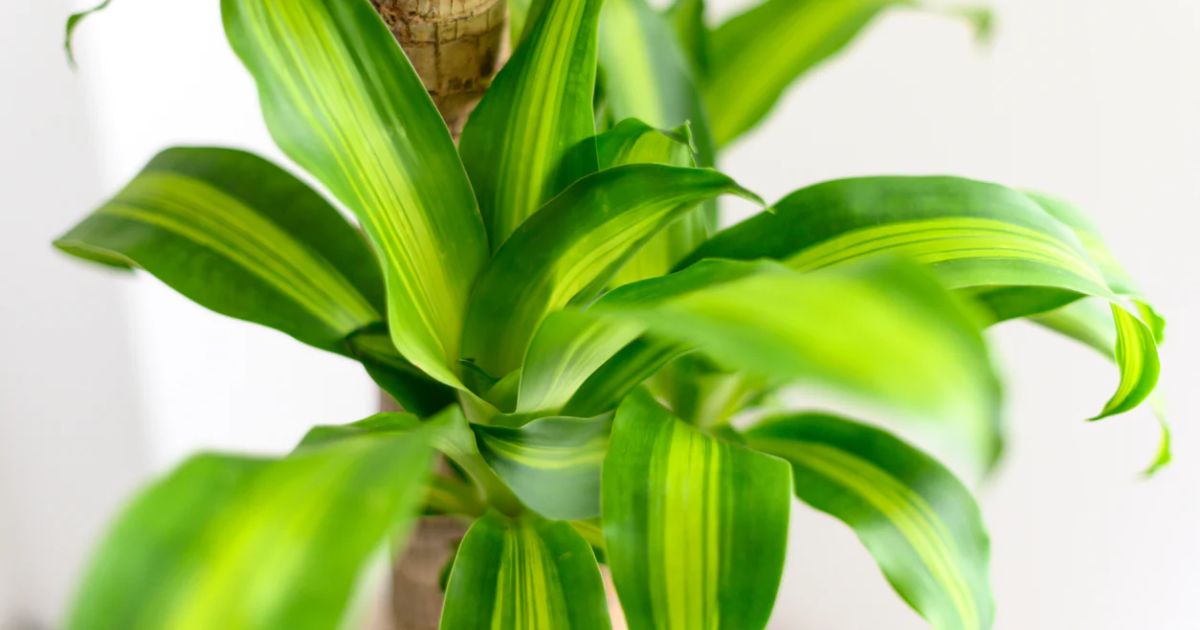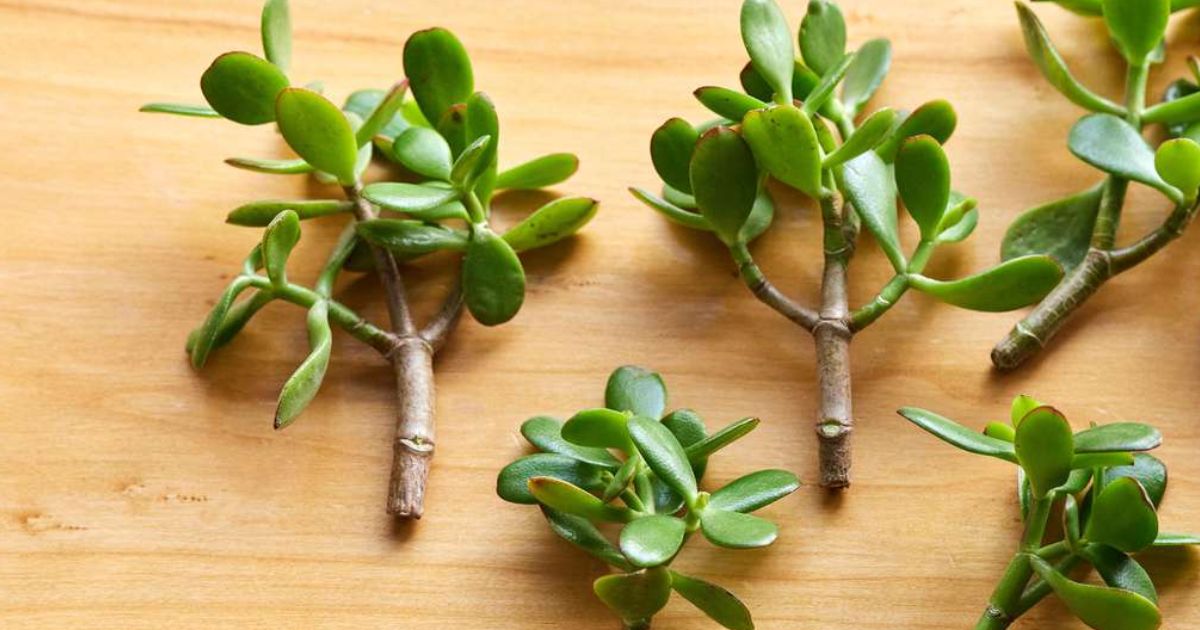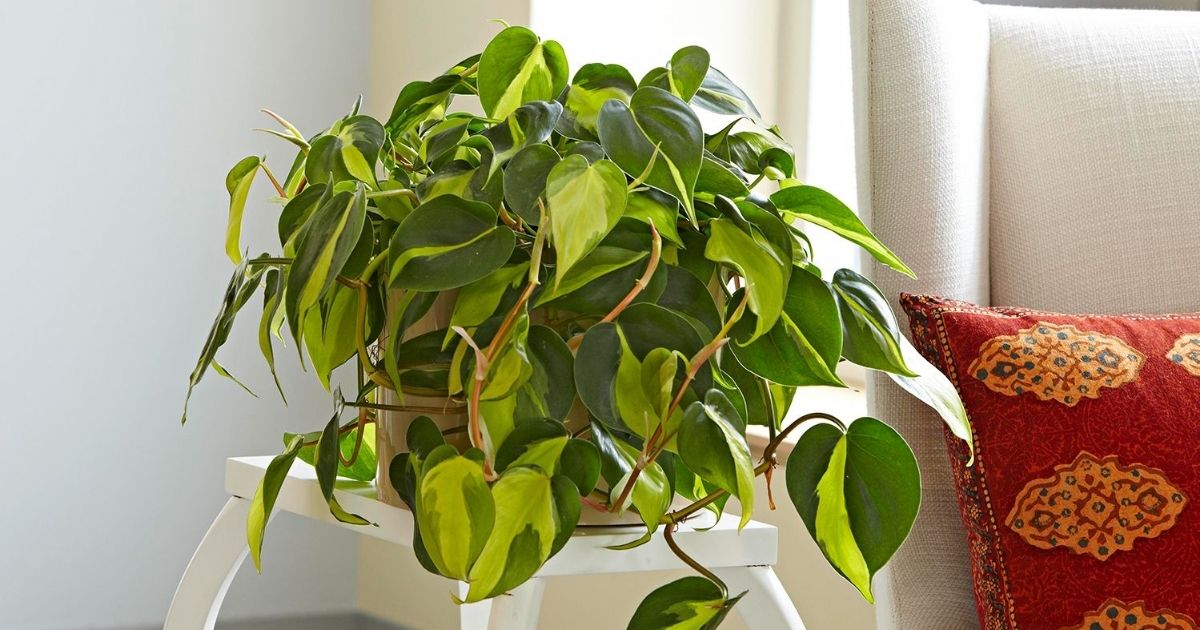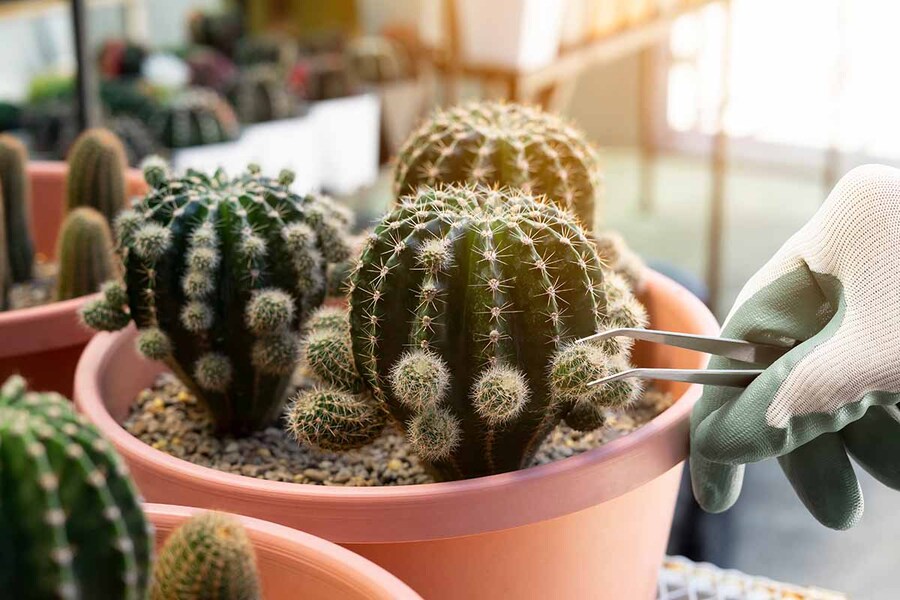How To Propagate Money Tree: 5 Easy & Fastest Steps
The money tree, also known as Pachira Aquas, symbolizes good luck. It is a lovely green decor for any interior and is easy to care for and propagate. If you have a money tree at home or want to grow one from scratch, you might be interested in knowing how to propagate money trees differently.
Table of Contents
Notices Before Propagating Money Tree
Before getting into the detailed instructions, here are some things you should know:
- Best Time for Propagating: Gardeners often propagate money trees during spring or summer. Although you can try propagation in fall or winter, low temperatures and drafts can lower plant growth.
- Disinfecting Tools: You need a knife to propagate plants and it must be clean to avoid the spread of harmful bacteria and pathogens between plants. So, disinfect the blade by dipping it in rubbing alcohol or other suitable disinfectant.
- Optimal Conditions: Newly propagated plants will be fragile and need optimal conditions to grow well. Place the cutting in a place with high humidity and lots of sun exposure. Keep the soil lightly moist but not over-watering.
How To Propagate Money Tree In Water
Can a money tree root in water? Yes, it can. In fact, propagating plants in water is the simplest and fastest approach compared to others. It allows you to observe root growth progress easily. Once the roots have reached sufficient length, transferring the cuttings to the soil is simple. Let's get started!
What To Prepare
- Vase or glass
- Small pot
- Scissors or cutting shears
- Water
- Potting soil
- Rooting hormone (Optional) (e.g. Rootex Rooting Hormones)
Instructions
Step 1: Cut Off A Stem
To start, choose a healthy green stem with lots of leaves and 2 to 3 nodes - these are bumps where new leaves grow along the stem.
How do you take cuttings from a money plant? Use sharp and sterilised scissors or cutting shears, and carefully snip a 6-inch cutting, leaving about 1/2 inch below the node.
Step 2: Remove Extra Leaves
Trim off the cutting's bottom leaves and leave 2 to 3 leaves at the top. Ensure that the bottom 1/3 of the stem is leaf-free.
To promote faster and stronger root growth, soak the cut end of the cutting into the prepared rooting hormone.
Step 3: Place the Cuttings In Water
Use a cup, vase or glass jar to hold the cut money tree branches, ensuring the bottom is submerged in water at room temperature. Place the bottom 1/3 of the cutting in water.
- Since money plants thrive in bright, indirect light, choose a spot near a sunny window so the cutting can receive filtered sunlight.
- Ensure the environment remains within 18-26°C, as money plants prefer tropical conditions.
If your location lacks natural light, consider using grow lights to supplement lighting for the cuts.
Step 4: Wait For Roots
Change the water every 3-5 days and watch for root development. Small white roots will appear from the bottom node submerged in the water.
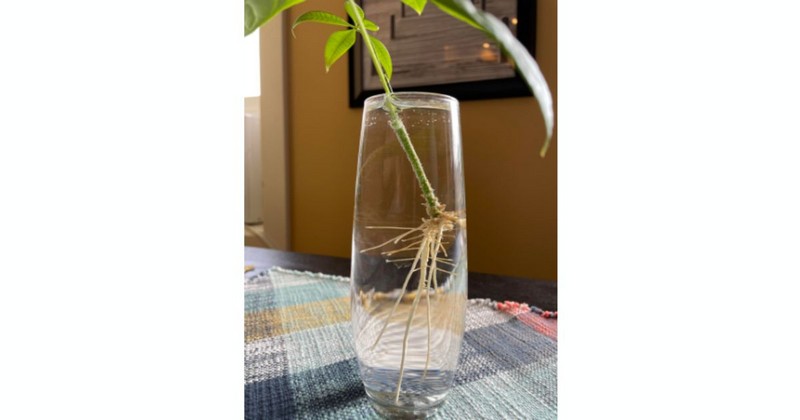
The money tree cutting's root
Remember that, like fig trees and bamboo, money plants are slow growers, so be patient. Some cuttings root in a few weeks, while others may take up to 2 months.
Step 5: Plant the Cuttings In Soil
Plant cuttings in well-drained soil when their roots reach 2 inches in length:
- Fill the pot with drainage holes with soil.
- Water lightly to ensure the soil is moist.
- Poke a hole in the centre of the soil and gently place the root inside.
- Water the soil thoroughly again to ensure even moisture.
- Finally, return your new money plant to its original location where it can receive bright, indirect light.
During the first weeks, maintain soil moisture to help the plant adapt to its new environment.
How To Propagate Money Trees In Soil
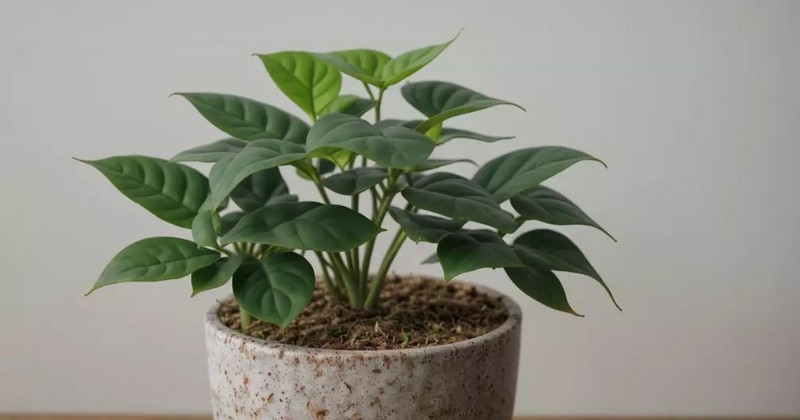
What To Prepare
- Scissors or shears
- Small pot
- Wire hanger
- Clear plastic bag
- Rubber band
- Water
- Potting soil
- Rooting hormone (Optional)
Pro tip: Get all these tools and materials at Benchmark Hydroponics for the best quality and price.
Instructions
Step 1: Take A Cutting
Choose a healthy green stem with many leaves and 2 to 3 nodes. Use sharp and sterilised scissors or cutting shears, and carefully snip a 6-inch cutting, leaving about 1/2 inch below the node.
Step 2: Remove Extra Leaves
Trim off the cutting's bottom leaves and leave 2 to 3 leaves at the top. Ensure that the bottom 1/3 of the stem is leaf-free.
To promote faster and stronger root growth, soak the cut end of the cutting into the prepared rooting hormone.
Step 3: Place the Cutting In the Soil
Prepare a 6-inch pot with drainage holes and fill it with well-draining soil. Choose a suitable soil mix (for example, mix vermiculite, pebbles, or sand into a regular potting mix). Water thoroughly after filling the pot.
Then, make a finger-sized hole in the soil and carefully place the cutting inside, ensuring the bottom 1/3 is buried in the soil. Water again to ensure the cutting receives enough moisture.
Step 4: Cover The Cutting With Plastic Bag
Cover your money tree cuttings with a clear plastic bag. Since money plants thrive in humidity, this temporary greenhouse will help maintain moisture.
Bend the wire hanger into a U shape and tuck the ends into the pot, placing the top of the U over the cutting. Then, cover the pot with clear plastic, ensuring it fits tightly.
Seal the bag by tucking both ends under the pot or using a rubber band.
Step 5: Take Care of Your Cutting
- Place your cutting in a spot full of bright, indirect light and keep the soil always moist.
- Open the plastic bag every few days and press your finger 1 to 2 inches deep to check the soil moisture level. Water thoroughly if the soil feels dry.
- Maintain a temperature range of 18-26°C indoors.
Be patient and wait for changes to appear within 6 to 8 weeks. The first signs of new growth will sprout from the top of the plant. After that, keep your new money tree in a warm, brightly lit location.
See more: Cloning Plants: What It Is, Its Benefits & How-To.
How To Propagate Money Tree Plants From Seeds
Typically, indoor-grown money trees do not flower or produce seed pods. Therefore, to have seeds for this method, you have to buy them or get them from an outdoor money tree.
What To Prepare
- Money tree seeds
- Sharp knife
- Sowing tool
- Small pot
- Water
- Potting soil
Instructions
Here's how to propagate a money tree using seeds:
Step 1: Prepare Money Tree Seeds
Collect seeds from the seed pods of your plant or buy from suppliers. If you grow a money tree outdoors, pay attention to the large, coconut-like pods on the ground below it.
Simply use a knife to open the pods and collect the round, dry, brown seeds. Remove shriveled or white seeds, as they will not germinate.
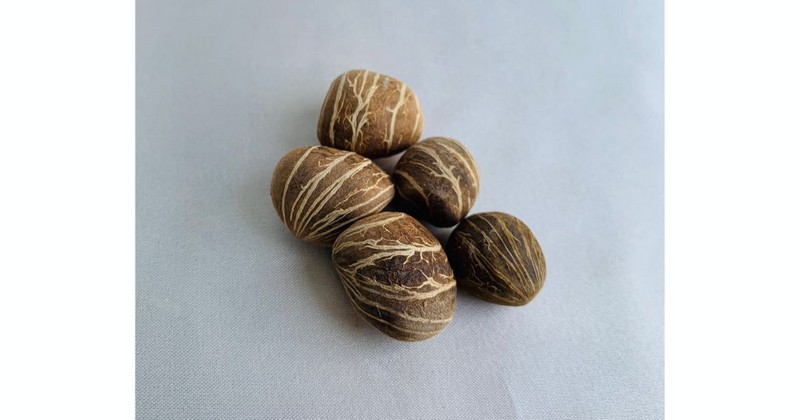
Money tree seeds
Step 2: Moisten the Soil
Fill your pot with well-draining soil and then water it thoroughly.
Once again, you need a pot with drainage holes at least 6 inches wide to provide your new plant ample space for growth. Whether you use a mixture of regular potting soil combined with vermiculite, pebbles, or sand, ensure the soil is moist enough after watering.
Step 3: Plant the Seeds
If you have many seeds, just add one seed per pot.
Use your finger to make a hole about 1/4 inch deep in the centre of the pot. Place the seed inside with the pale spot, or eye, facing sideways towards you. Then, gently cover the seeds with soil just below the surface.
Step 4: Maintain the Optimal Environment
After sowing the seeds, create the ideal conditions mentioned in the two methods above:
- Choose a sunny location so your money plant receives indirect sunlight.
- Maintain a temperature of approximately 26°C.
- Water the soil regularly to keep it moist.
- Test for moisture by sticking your finger 1 to 2 inches deep into the soil daily.
If you don't have a suitable warm sunny spot, place a heating mat under the pot and add a grow light above it to create the optimal environment for the seeds to germinate.
Step 5: Wait For The New Tree
Watch for seedling emergence in about a week while maintaining regular watering. Money tree seeds usually germinate quickly, with baby plants sprouting within 7 to 10 days. After about two weeks, the money tree will grow pointed leaves and develop nearly double in height.
Tips To Take Care Money Tree Plant

Once you've successfully propagated your money tree, there are things to consider to avoid common money tree issues and ensure the plant flourishes:
- Humidity: Regularly mist the leaves to maintain humidity around 50%. If leaves become brown, curled, or brittle, this may indicate insufficient moisture. To deal with this, place the plant on a tray filled with water and pebbles or use a humidifier.
- Fertilising: Following the fertiliser's instructions, feed your money tree a balanced, water-soluble fertiliser, diluted by half every two weeks from spring to fall.
- Pruning: Shape and prune your money tree in the spring to maintain the desired shape. Use clean and sharp scissors to cut off branches growing at the base to neaten the tree. Also, rotate the plant every few months to ensure even growth.
- Repotting: Repot the money plant into a larger container when its roots grow taller than the current pot. Choose a new pot that is 1 to 2 inches larger and filled with well-drained soil. You should repot every 2 to 3 years.
- Pest Control: Keep an eye out for pests like spider mites, aphids or mealybugs and treat them promptly. Wipe the affected leaves with a cotton ball soaked in alcohol or use a neem oil spray.
See more: How To Propagate Pine Trees: Step-By-Step Guide for Starters
The Bottom Line
Learning how to propagate a money tree is simple, and once you know the process, it becomes a fulfilling experience. That's how you expand your plant collection while sharing the money tree's luck and financial well-being symbolism with your family. For those interested in more lucky plants, check out our guide on propagating a peach tree.
Frequently Asked Questions
Can you grow a money tree from a cutting?
Yes, you can grow money trees from a cutting. Actually, stem cuttings are the fastest method for propagating these plants.
How do you propagate money plant babies?
To propagate money plant babies:
- Step 1: Observe mature plants to see baby plants around their base.
- Step 2: Carefully remove the baby plants with roots attached.
- Step 3: Place the baby plants in small pots filled with well-draining soil.
Step 4: Water thoroughly and place them under indirect light.
